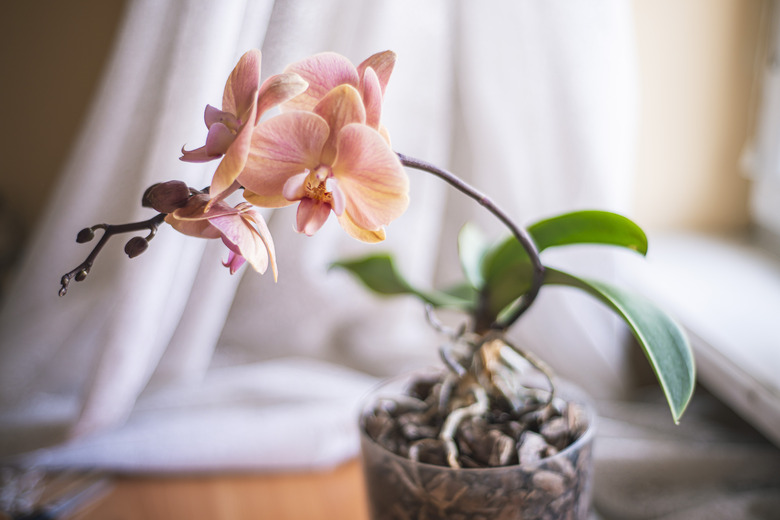How To Grow Phalaenopsis Orchids From Seeds
We may receive a commission on purchases made from links.
The arching stems of the moth orchid (Phalaenopsis spp.) sway gently under the numerous white, pink, yellow, spotted or variegated blossoms. Moth orchids are perennials in partial to full shade outdoors in U.S. Department of Agriculture plant hardiness zones 10 through 12, although they also grow in bright, filtered light indoors. While home gardeners normally propagate orchids by separating plantlets or "keikis" from the parent plant, you can use agar to grow phalaenopsis orchids from seeds. Be aware that it is a long process, and your baby orchids may take five to seven years before they produce flowers.
About Phalaenopsis Orchids
About Phalaenopsis Orchids
The phalaenopsis orchids, commonly known as moth orchids, are a group of approximately 60 species plus a multitude of hybrids. Most of them are epiphytic plants that grow in trees in the warm subtropical and tropical climates of a number of Asian countries. Their aerial roots absorb moisture from the humid air and rainwater as well as nutrients from the decaying plant matter that gathers in the crotches of the supporting trees.
Like most orchids, the seeds of moth orchids are incomplete. They don't have an endosperm, which is the part of the seed that nourishes the embryo as the seed germinates. In their natural habitat, the tiny seeds rely on mycorrhizal fungi for the nutrients needed for successful germination. At home, you can use a nutrient-rich agar to germinate the seeds in vitro.
Pollinating the Flowers
Pollinating the Flowers
Orchids use a variety of lures to attract birds, bats, moths, flies or other insects to spread the sticky pollen from one flower to another. The moth orchid attracts moths with its fluttering, mothlike petals. You can use a small paintbrush to gather the pollen from one blossom and transfer it to a blossom on a different plant to create new hybrid orchids.
Successful pollination results in seed capsules that develop over several months. To harvest the seeds, place a bag over the capsule to catch up to a million of the dustlike seeds. Use scissors sterilized in rubbing alcohol to cut the seed capsule from the plant when it begins to split. While the seeds can be dried and stored for many years, it's generally best to sow them immediately.
Germinating the Seeds
Germinating the Seeds
Sterilize one or more glass flasks in boiling water. Also wipe down the counter and any tools with a disinfecting solution, such as Lysol or rubbing alcohol. You can also sterilize the orchid seeds if desired by placing them in a paper coffee filter and then soaking the filter and seeds in a solution of 5 percent bleach for 10 minutes. Rinse carefully with sterile water and set aside to dry.
Mix the orchid-nutrient agar according to the package instructions and fill the flask(s) one-half full. Scatter the orchid seeds across the top of the agar. Close the beaker with a cotton or foam stopper. Place it in a warm location in bright, filtered light for at least six hours per day or under a grow light for 14 to 16 hours daily.
Monitor the seeds as they develop into protocorms, which are the tiny seedlings. It may take several months before the seeds germinate and roots and leaves develop. When the shoots are 4 inches long with discernible roots, sterilize long-handle tweezers before carefully removing the orchid plantlets from the agar. Transplant into moistened orchid mix in 4-inch orchid pots.
Caring for Moth Orchids
Caring for Moth Orchids
Moth orchids need warm temperatures that are no lower than 60 degrees Fahrenheit at night and between 72 and 85 degrees during the day. Set the orchid pots on top of a pebble- and water-filled tray to increase humidity but don't let the water touch the bottom of the pots.
Water before the orchid mix is completely dry, usually weekly. Moth orchids do not have pseudobulbs to store water. Fertilize every week with a 1/4-strength orchid fertilizer by watering and then applying the diluted fertilizer until it drains from the pot. Then, water again.
Keep your moth orchids in bright, filtered light. In fall, allow night temperatures to drop 10 degrees below daytime temperatures to encourage bud formation.
